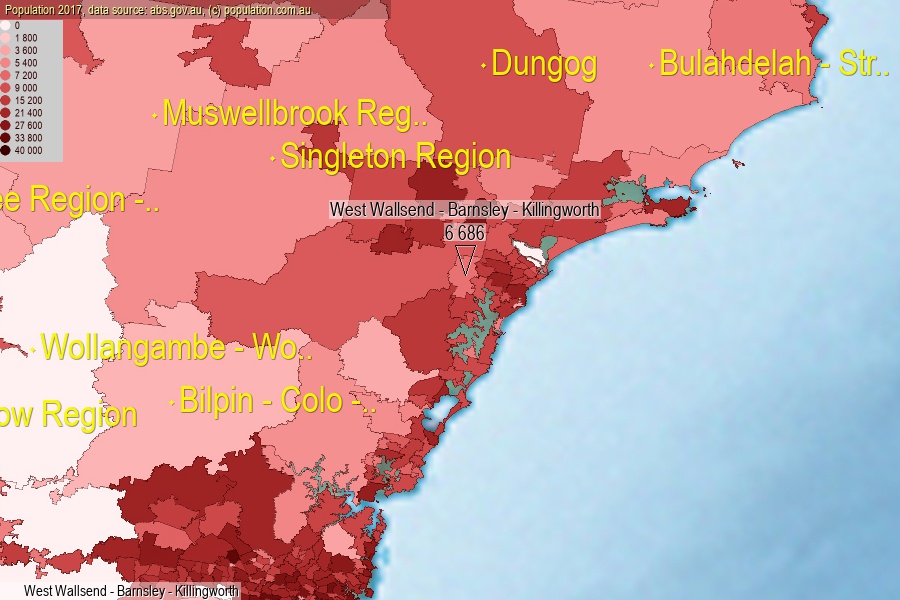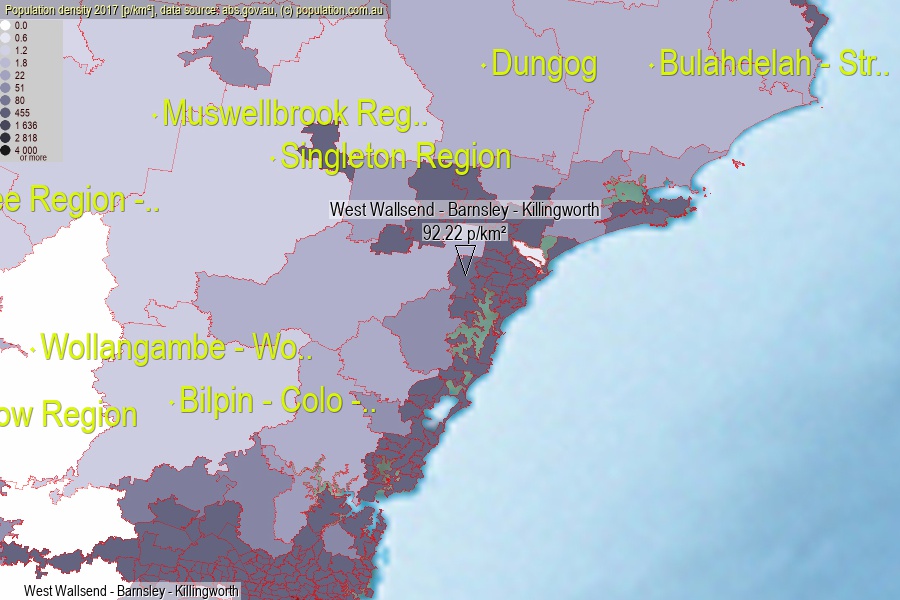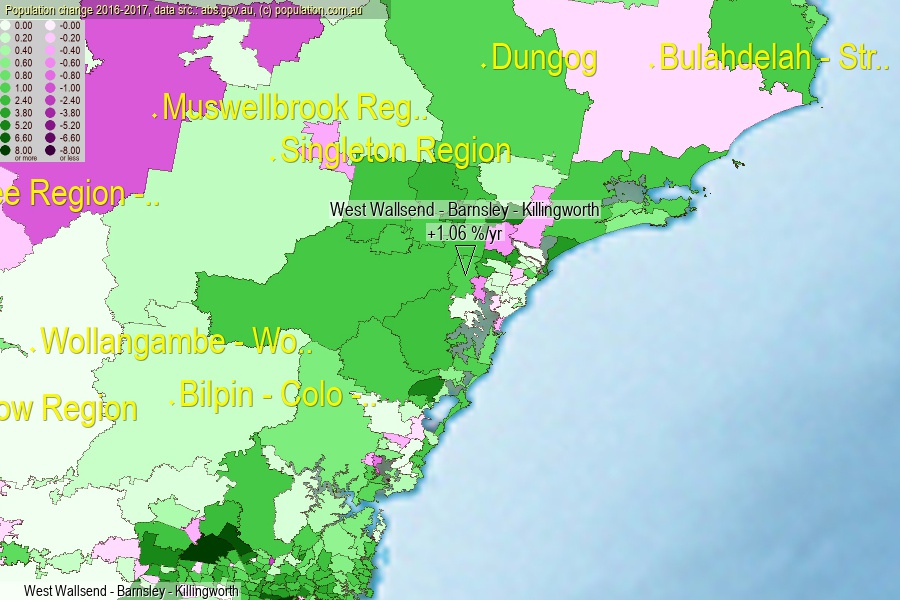 population.com.au
population.com.auLast official estimated population of West Wallsend - Barnsley - Killingworth (as Statistical Area Level 2) was 6 686 people (on 2017-06-30)[2]. This was 0.03% of total Australian population and 0.084% of NSW population. Area of West Wallsend - Barnsley - Killingworth is 72.50 km², in this year population density was 92.22 p/km² . If population growth rate would be same as in period 2016-2017 (+1.06%/yr), West Wallsend - Barnsley - Killingworth population in 2025 would be 7 273. [0]



Click to enlarge. West Wallsend - Barnsley - Killingworth is located in the center of the images.
Population [people], population density [p./km²] and population change [%/year] [2]
View borders » (new window) [4]
[1991-1992] -0.64 %/Yr.
[1992-1993] -1.31 %/Yr.
[1993-1994] -0.73 %/Yr.
[1994-1995] -0.51 %/Yr.
[1995-1996] -0.31 %/Yr.
[1996-1997] +0.11 %/Yr.
[1997-1998] +0.29 %/Yr.
[1998-1999] -0.15 %/Yr.
[1999-2000] -0.57 %/Yr.
[2000-2001] -0.03 %/Yr.
[2001-2002] -0.47 %/Yr.
[2002-2003] -0.50 %/Yr.
[2003-2004] -0.64 %/Yr.
[2004-2005] -0.25 %/Yr.
[2005-2006] -0.35 %/Yr.
[2006-2007] -0.19 %/Yr.
[2007-2008] +0.24 %/Yr.
[2008-2009] +0.52 %/Yr.
[2009-2010] +0.33 %/Yr.
[2010-2011] -0.11 %/Yr.
[2011-2012] +0.24 %/Yr.
[2012-2013] +0.78 %/Yr.
[2013-2014] +0.89 %/Yr.
[2014-2015] +1.03 %/Yr.
[2015-2016] +1.05 %/Yr.
[2016-2017] +1.06 %/Yr.
[0] Calculated with linear interpolation from officially estimated population
[1] Read more about SA2 and Australian Statistical Geography Standard (ASGS) on abs.gov.au
[2] Population data from Australian Bureau of Statistics (Population and density: 2017; change: 2016-2017)
[3] Digital Boundaries: Australian Statistical Geography Standard (ASGS) 2016.
[4] Border coordinates are simplifyed using Ramer-Douglas-Peucker algorithm.